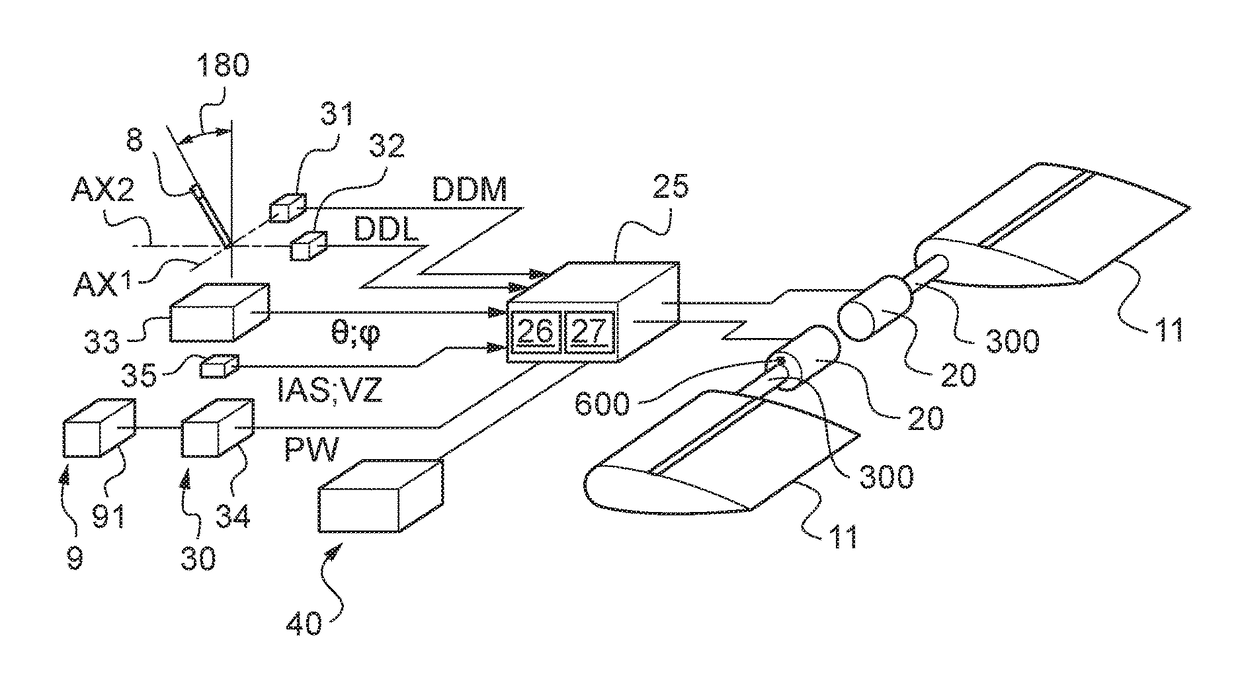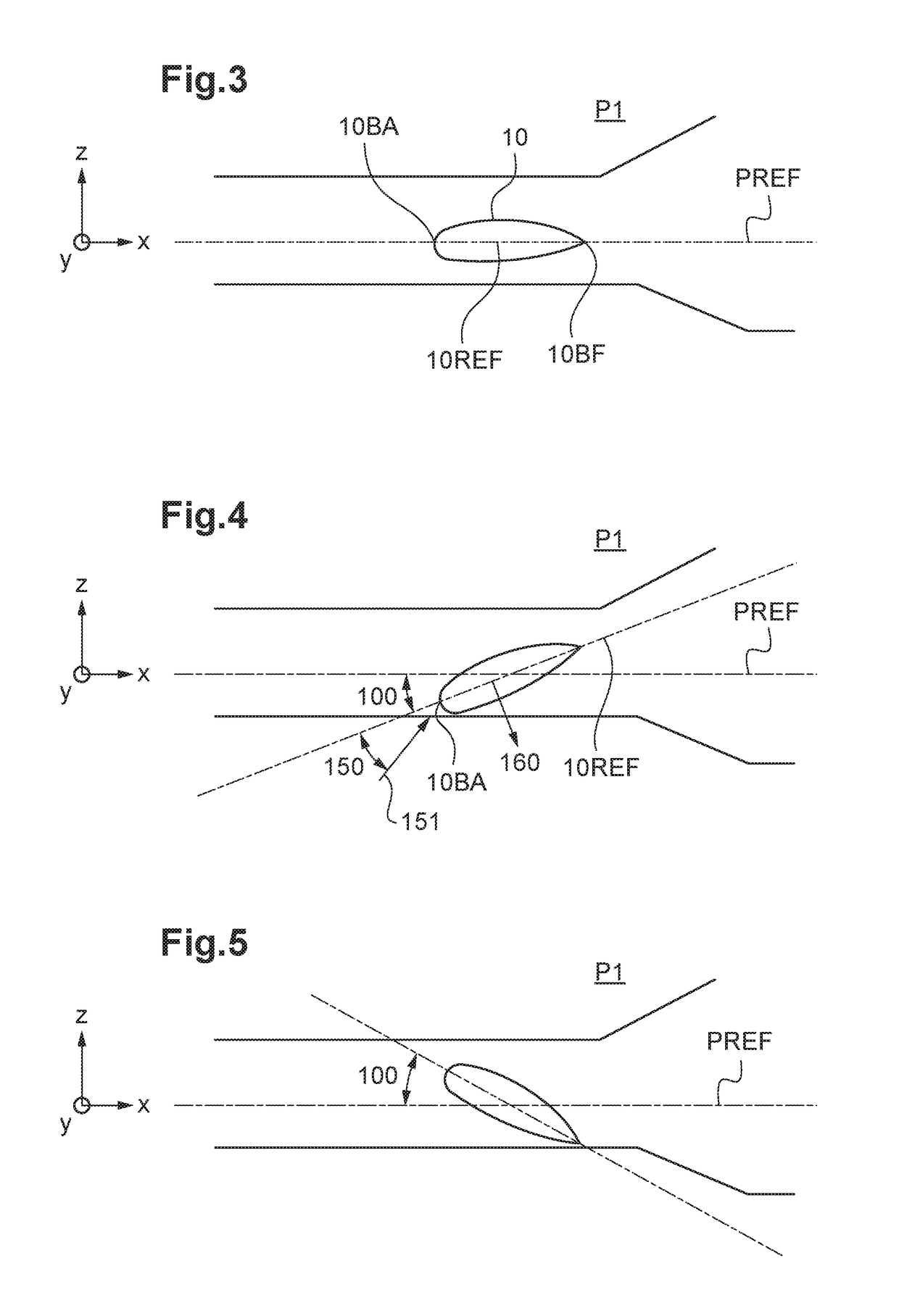Advanced control relationship for a deflectable stabilizer
a stabilizer and advanced control technology, applied in the direction of vehicle position/course/altitude control, process and machine control, instruments, etc., can solve the problems of increasing the aerodynamic drag of the rotorcraft, reducing the maximum speed, and negative consequences of attitude variations, so as to optimize the available power margin, improve pilot visibility, and reduce the total power consumed by the aircraft
- Summary
- Abstract
- Description
- Claims
- Application Information
AI Technical Summary
Benefits of technology
Problems solved by technology
Method used
Image
Examples
Embodiment Construction
[0152]Three mutually orthogonal directions X, Y, and Z are shown in some of the figures.
[0153]The first direction X is said to be longitudinal. The term “longitudinal” relates to any direction that is substantially parallel to the first direction X.
[0154]The second direction Y is said to be transverse. The terms “lateral” and “transverse” relate to any direction substantially parallel to the second direction Y.
[0155]Finally, the third direction Z is said to be in elevation. The term “in elevation” relates to any direction that is substantially parallel to the third direction Z.
[0156]FIG. 1 shows an aircraft 1 having a fuselage 2. The fuselage 2 extends longitudinally from a nose to a rear end, in elevation from a bottom to a high portion carrying a rotary wing 3, and laterally from a left flank to a right flank.
[0157]By way of example, the aircraft 1 has a rotary wing 3 comprising a main rotor 4 for providing lift and possibly also propulsion. The main rotor 4 is set into rotation b...
PUM
 Login to View More
Login to View More Abstract
Description
Claims
Application Information
 Login to View More
Login to View More - R&D
- Intellectual Property
- Life Sciences
- Materials
- Tech Scout
- Unparalleled Data Quality
- Higher Quality Content
- 60% Fewer Hallucinations
Browse by: Latest US Patents, China's latest patents, Technical Efficacy Thesaurus, Application Domain, Technology Topic, Popular Technical Reports.
© 2025 PatSnap. All rights reserved.Legal|Privacy policy|Modern Slavery Act Transparency Statement|Sitemap|About US| Contact US: help@patsnap.com



